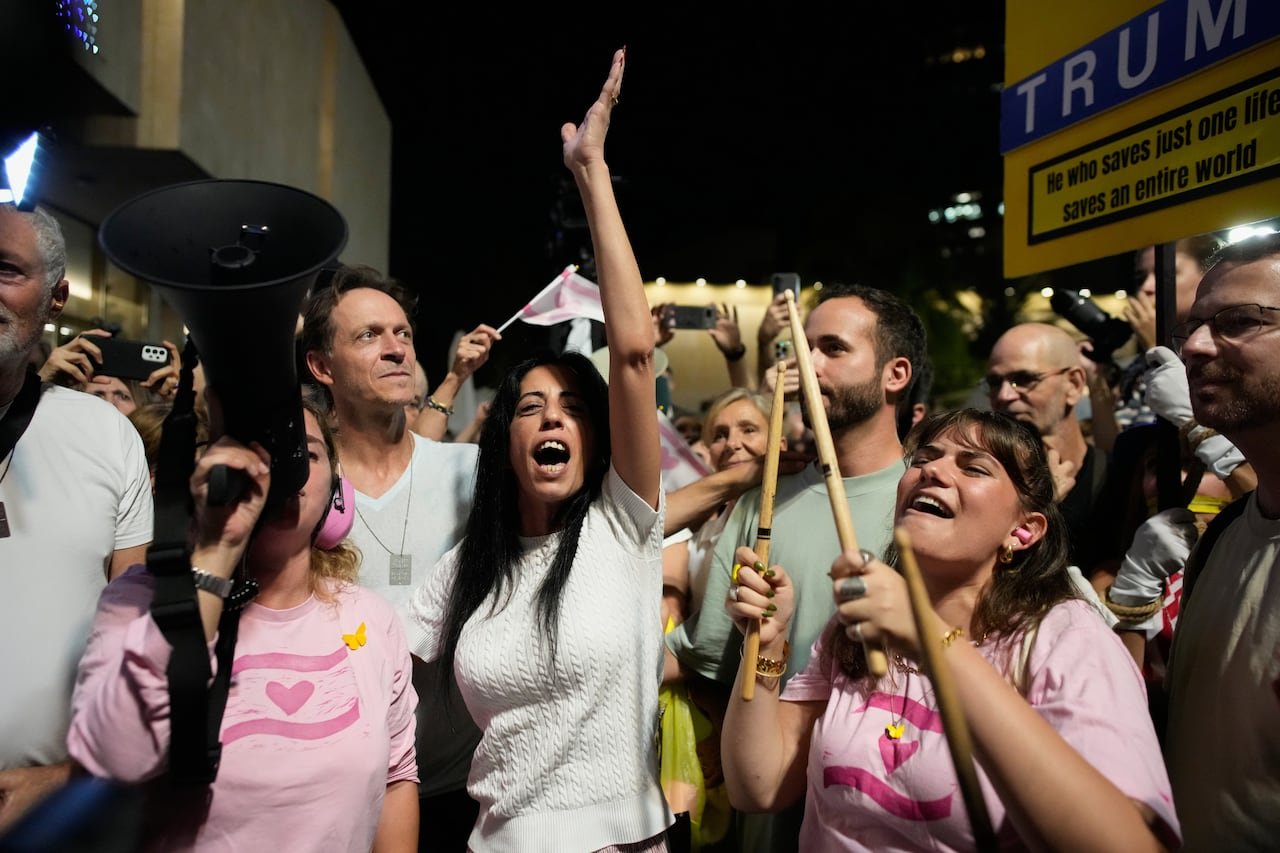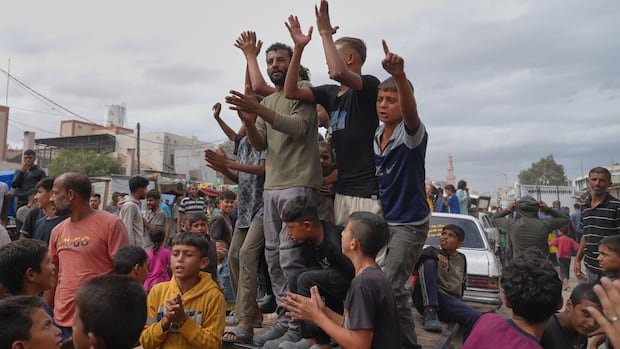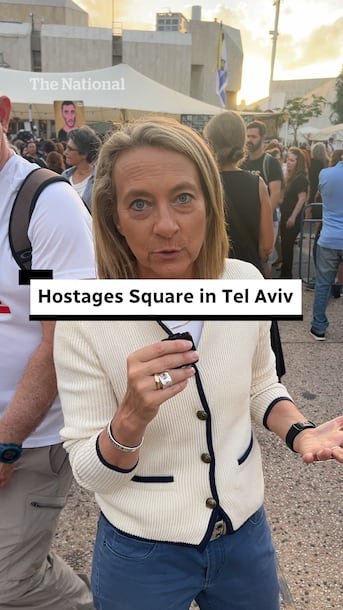Israel’s government ratified a ceasefire with the Palestinian militant group Hamas on Friday, clearing the way to suspend hostilities in Gaza within 24 hours and free Israeli hostages held in Gaza within 72 hours after that.
The Israeli cabinet agreed to the deal early Friday morning, roughly 24 hours after mediators announced an agreement to free Israeli hostages in exchange for Palestinian prisoners, in the first phase of U.S. President Donald Trump’s initiative to end the two-year war in Gaza.
“The government has just now approved the framework for the release of all of the hostages — the living and the deceased,” Israeli Prime Minister Netanyahu’s English-language X account said.
The government has just now approved the framework for the release of all of the hostages – the living and the deceased.
The war has deepened Israel’s international isolation and upended the Middle East, having evolved into a regional conflict that has drawn in Iran, Yemen and Lebanon. It also tested the U.S.-Israeli relationship, with Trump seeming to lose patience with Netanyahu and pressuring him to reach a deal.
- This Sunday, Cross Country Checkup is asking: What does a peace deal between Israel and Hamas mean to you? What questions do you have? Fill out this form and you could appear on the show or have your comment read on air.
Israelis and Palestinians alike rejoiced after the deal was announced, the biggest step yet to end two years of war in which over 67,000 Palestinians have been killed, and return the last hostages seized by Hamas in the deadly attacks that started it.
‘It’s over?’
In Deir al-Balah, Gaza, there were no sounds of drones Thursday, but rather the sound of car horns and the hurried conversations of people walking freely.
Mahmoud Abdullah expressed cautious optimism about the deal. “Everything that happened, it’s over?” he asked CBC freelance videographer Mohamed El Saife. “No more bombing, no more drones, no displacement, no hunger … All these things are over?”
The 27-year-old said he was been displaced more than 10 times since the war began.
“The happiness is too big to explain, the struggle of two million people will end soon,” Abdullah said.
Palestinian-Canadian Mohammed Nijim says he has ‘mixed feelings’ after Hamas and Israel agreed to a ceasefire deal and prisoner exchange. Nijim, who has family in Gaza, says people are ‘cautious’ because previous agreements have been broken in the past.
Hamas’s exiled Gaza chief Khalil Al-Hayya said he had received guarantees from the United States and other mediators that the war was over.
Hostages to be freed within 72 hours
An Israeli government spokesperson said the ceasefire would go into force within 24 hours of government approval of the deal. After that, the hostages held in Gaza would be freed within 72 hours.
Twenty-two Israeli hostages are still believed to be alive in Gaza, while 26 are presumed dead. That includes Hadar Goldin, who died in 2014, and whose remains are believed to be in Gaza.
Einav Zaugauker, whose son Matan is one of the last hostages, rejoiced in Tel Aviv’s so-called Hostages Square, where families of those seized in the Hamas attack that triggered the war two years ago have long assembled.
“I can’t breathe, I can’t breathe, I can’t explain what I’m feeling … it’s crazy,” she said.
CBC News chief correspondent Adrienne Arsenault went down to Hostages Square in Tel Aviv after the news of a U.S.-brokered plan for peace in Gaza. On Thursday, U.S. President Donald Trump said that the Israeli hostages being held in Gaza should be released on Monday or Tuesday, bringing new hope for families who have been holding vigil in the square for the last two years.
Hamas has indicated that recovering the bodies of the dead may take longer than releasing those who are alive. Under the deal, fighting will cease, Israel will partially withdraw from Gaza and Hamas will free all remaining hostages in exchange for hundreds of prisoners held by Israel.
In Gaza, Magdy Abu Ayada told CBC News he felt the release of Palestinian prisoners was not worth the bloodshed his home and his family went through in the last two years.
His father was killed, as were other members of his family.
“What do you want me to go back to … My destroyed home? To my neighbourhood with no water or internet or anything?
“I don’t want to go back,” he said.
Aid to be restored to Gaza
The accord, if fully implemented, would bring the two sides closer than any previous effort to halt the war.
Fleets of trucks carrying food and medical aid would be allowed to surge into Gaza to relieve civilians, hundreds of thousands of whom have been sheltering in tents after Israeli forces destroyed their homes and razed entire cities to dust.
But much could still go wrong.
Even after the deal was signed, a Palestinian source said the list of Palestinians to be released was not finalized. The group is seeking freedom for some of the most prominent Palestinian convicts held in Israeli jails, as well as hundreds of people detained during Israel’s assault.
One prisoner believed to be on that list is Marwan Barghouti, a Fatah leader serving multiple life sentences for involvement in attacks that killed Israelis and who remains the most popular leader among Palestinians.
“Barghouti has credibility with Palestinian factions, almost across the spectrum, even while he’s been in jail,” Janice Stein of the Munk School of Global Affairs and Public Policy at the University of Toronto told CBC News. “He has been able to communicate, and he has, by many, been regarded as the figure post-Abbas who could unify Palestinians.”

Governing of Gaza still not finalized
Further steps in Trump’s 20-point plan have yet to be discussed. Those include how the shattered Gaza Strip is to be ruled when the fighting ends and the ultimate fate of Hamas, which has so far rejected Israel’s demands it disarm.
The agreement says the territory’s day-to-day operations would be run by a transitional government made up of “qualified” Palestinians and international experts. Hamas would have no role, “directly, indirectly, or in any form.”
That government would answer to a new oversight committee, called the “Board of Peace.” Trump would chair it.
Former U.K. prime minister Tony Blair would also be on the board, with as-yet unnamed heads of state.
But before that, there remains the question of how Israeli troops would withdraw from the Gaza Strip.
When Trump released his multi-point ceasefire plan last week, it initially included a rough and imprecise map of the withdrawal. He later posted a more detailed map showing where the Israel Defence Forces (IDF) would pull back to following the release of the remaining hostages.
The map indicates that the IDF would remain in populated areas, including Rafah, Beit Hanoun and Khuza’a, as well as the Philadelphi Corridor, the narrow buffer zone along the Egypt-Gaza border that Israel has sought to control in order to control border crossings.
The withdrawal line suggests the IDF would still partially encircle Gaza City.
More than 67,000 Palestinians have been killed in Israel’s assault on Gaza, launched after Hamas-led militants stormed through Israeli towns and a music festival on Oct. 7, 2023, killing 1,200 people and capturing 251 hostages.


